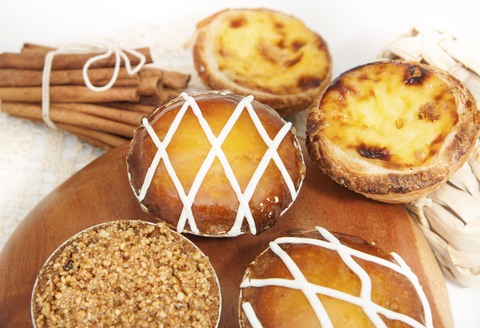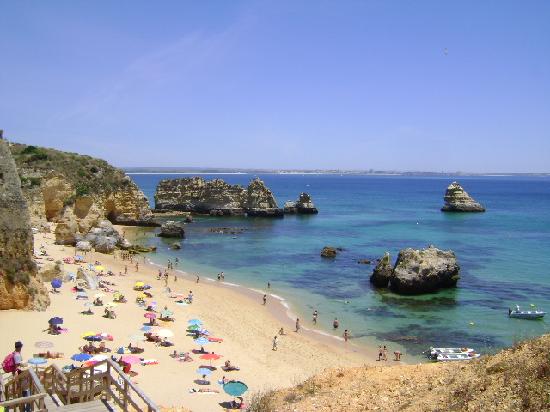It’s been over fifteen years since I’ve spent the winter holidays with my Portuguese family back in New England. It’s safe to assume that I miss them. But what I miss most of all is all the food and festivities.
Christmas was a holiday a month in the making, with cookies, pastries, flan and so much more in planning. We shopped, prepped and baked in the week leading up to the big holiday. We were a Portuguese family, and that meant we made enough for a week of leftovers. Nobody could ever complain that there wasn’t enough food. We made enough to feed our small family thrice over.
Christmas Eve dinner traditionally started with boiled octopus my mother would preorder at the Portuguese market a couple weeks in advance. I asked my aunt once why we always had octopus for Christmas Eve. Her reply: because we eat plenty of red meat on Christmas day.
My cousins and I would take off the tentacles and suction them to our fingertips to pretend we were monsters, and then we ate them one by one like Bugles. Now, at every restaurant I frequent from London to LA, I must try the octopus, even though most times, no one wants to try it with me.
Christmas morning started early. First, we opened the remaining presents, next we prepped for the holiday lunch. My mother would set the flan in a large dish, and I would stop myself from sticking my finger in the caramel for a taste.
Before the party could begin, we visited the Portuguese church for Christmas mass, which was always a half hour longer than normal. The kids in CCD (Continuing Catholic Development classes) held a Christmas pageant with a live adaptation of the Nativity Scene, complete with a few extra angels. As a young child, I always played an angel, but my cousin João played Joseph a few times. He was a master at it. Once, we even had a real baby Jesus, but most times, it was just the statue we’d kiss on special occasions.
Later, as my family arrived at our home, we would set out the pitted olives, Pasteis de Bacalhau (cod fish cakes), and Rissois (shrimp dumplings) for appetizers while my mother started to fry her first batch of delicious French fries. The smell was intoxicating (it still is) and I couldn’t help but sneak a few fresh ones while my mother wasn’t looking.
Once I stuffed my face full of olives and fries, the real lunch began, with enough meat to satisfy any carnivore. My family served not just beef, but pork roast, and the adults would fight over who got to suck on the two pigs’ feet. It wasn’t a pretty sight – the fight or the pigs’ feet. My cousins and I stuck with the beef and French fries, with of course, some rice and salad. Starch is Portugal’s best friend.
After dinner, once my stomach settled, my favorite part of the day began. Dessert lasted for hours, as we’d nibble on all the different treats for the rest of the afternoon. The kitchen table overflowed with sweets, like caramel flan, Malasadas (fried dough), Rabanadas (French toast), Pasteis de Nata (custard tarts), Pasteis de Feijão (sweet bean tarts), Queijadas (cheesecake tarts), my grandmother’s Arroz Doce (rice pudding), Pão de Ló (sponge cake), Folar (bread with Linguiça; I still don’t quite get why it’s considered dessert), and fruit salad spiked with Port wine.
Our family’s traditions originated in Northern Portugal, in a region called Tras os Montes (which translates to Behind the Mountains), but there are so many more Portuguese traditions from other regions of the country that we don’t celebrate.
Unlike Americans, who hang stockings on their fireplace for Santa Claus to fill, the Portuguese place shoes near their fireplaces instead, for Pai Natal (Father Christmas) or Jesus himself to fill. You’ll also never find a Christmas tree lot anywhere in Portugal, as it’s not tradition to buy a fresh tree every year. Instead it’s more common to find fake trees in people’s living rooms.
Some Portuguese families attend Christmas Eve mass, where the baby Jesus is not yet placed (as he is not yet born) and then come back home to eat boiled cod, potatoes, and broccoli rabe drizzled in olive oil, to celebrate the holiday.
In Azores, a group of islands off the Pacific coast of Portugal, the real presents come on the morning of Dia dos Reis (Day of the Kings) on January 6th. The night before, Azorean children pack their shoes full of straw and carrots, in hopes to lure the horses of the three wise men to their windowsill, where the wise men leave gifts and treats in exchange. This follows a week of caroling right after Christmas, called the Janeiras (or the Januaries). Traditionally, these carolers are thanked with gifts of chestnuts, apples, and cured sausages.
Portugal is full of Catholic and Pagan traditions, throughout the holidays and beyond. Not being in a very Portuguese community now (Los Angeles has only one Portuguese bakery in its 50 mile radius), I search for these foods and festivities wherever I can, to satiate the craving for a taste of home.
Only a few of these treats can I find around my area of Southern California, so I’ve vowed to start making my own. Thanks to blogs and cookbooks, like the ones written by Maria Dias (Tia Maria’s Blog), it actually seems possible.
Since most of my family’s recipes are locked within the minds of the older women in my family, there is no easy way to get them without watching them bake and take notes. And since there aren’t many Portuguese people in my area to celebrate with, I have to recreate some of these traditions with my local American family and friends. Luckily, many of them enjoy adding a few new traditions to their holiday season.
Written by : Suzanne Ferreira
Subscribe To My Newsletter
BE NOTIFIED ABOUT BOOK SIGNING TOUR DATES
Donec fringilla nunc eu turpis dignissim, at euismod sapien tincidunt.



